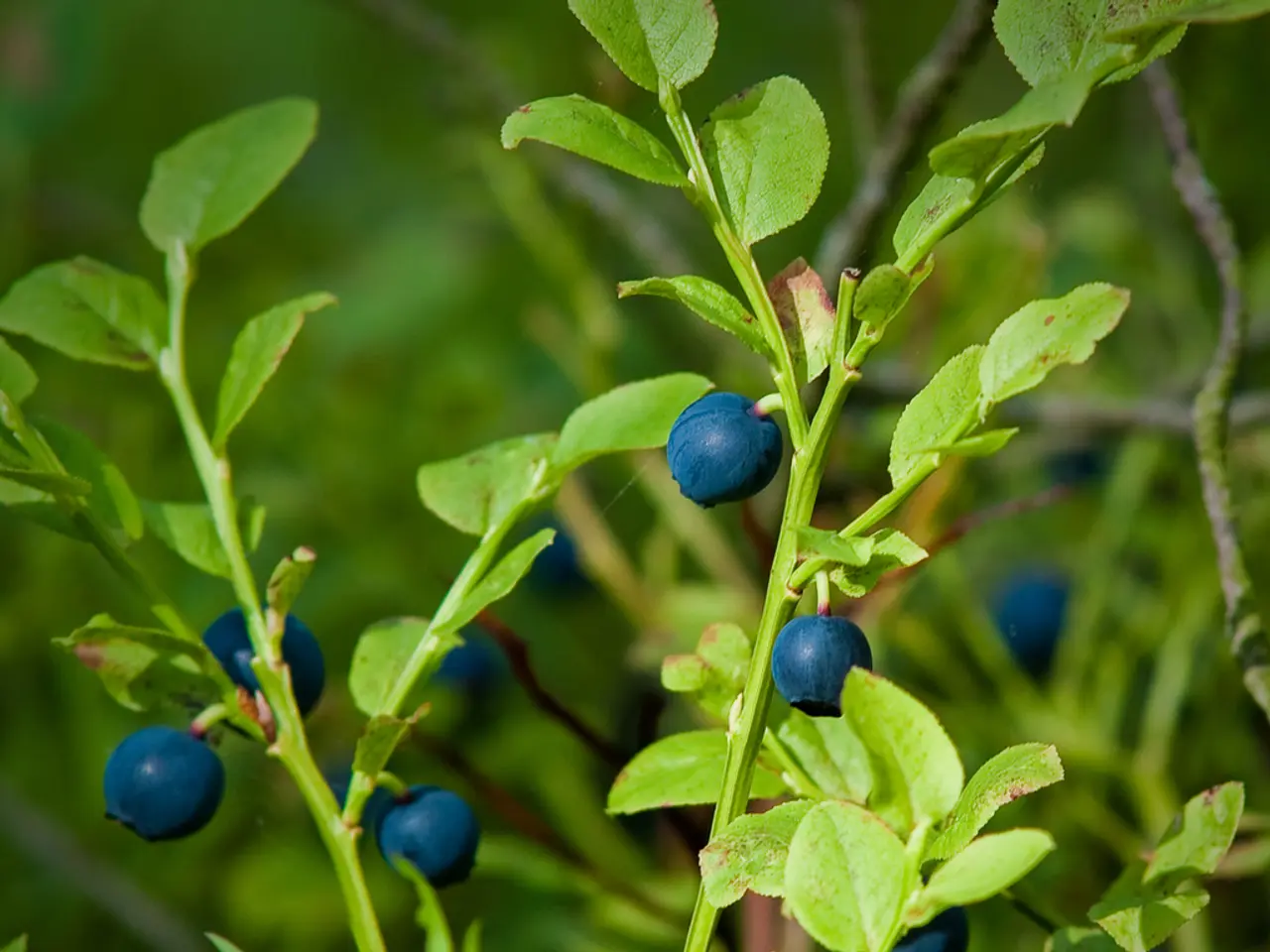Boosting Blackberry Yield: DIY Pruning Guide
Attention Berry Bundlers!
Get a Grip on Your Blackberry Chaos with This Pruning Guide
If you've ever battled through a blackberry thicket, you know the struggle is real. Let's talk about how to tame those thorny monsters and increase your harvest. Here's what you need to know about pruning blackberries, a Pacific Northwest specialty.
Pruning Blackberries: Why Bother?
Pruning isn't essential for blackberries – they can handle adversity. But when you prune, you'll encounter less pain while harvesting those succulent berries and improve the overall health of your bushes.
Pruning also helps distinguish between primocanes (first-year growth) and floricanes (second-year growth). Primocanes don't produce blooms or fruit, while floricanes do. If you don't prune, the tangled, disease-ridden mess prevents your plants from reaching their full potential.
The Art of Timing: When to Prune
There's debate over when to prune blackberries. Some advocate summer and winter pruning, while others favor fall pruning. Here's the lowdown on the best times for pruning blackberries, including specifics on primocanes and floricanes.
Fall Pruning (if you have everbearing varieties)
Fall isn't a common time to prune blackberries for standard varieties. However, for everbearing varieties, you can cut back the canes to the ground once the plants are dormant.
Winter Pruning (for most cases)
Winter is the most common time to prune blackberries, usually done to separate primocanes from floricanes. Just remember, overzealous pruning of floricanes can reduce the growth and development of primocanes. Nonetheless, blackberries can and should be trimmed throughout the year with different cuts for different seasons and reasons.
Year-Round Pruning
Always remove dead, diseased, or broken canes. After that, it gets tricky.
Understanding Blackberry Canes
Learning about these prickly Key West natives can help untangle the confusion. Here's a rundown on primocanes and floricanes with tips for pruning.
Primocanes
These first-year shoots pop up in April with lush, green foliage. They grow rapidly if left untouched, develop buds in late spring, and produce fruit the following year. Tip back the developing primocanes in late June or July to about 48 inches (1.2 m) to encourage lateral growth for increased yield.
Floricanes
Second-year canes that flower, set fruit, and die after harvesting, floricanes are the workers bees of the blackberry world. Identifying them can be tricky since both primocanes and floricanes can have green foliage. It's essential to remove floricanes after they've fruited and cut them back to the crown of the plant.
The Pruning Process
Although there are different blackberry varieties, the pruning basics remain the same. The primary goal is to remove the older floricanes, allowing the plant to funnel energy to the subsequent year's primocanes for increased fruit production. Always use sterile pruning shears and loppers.
Pruning Primocanes
- Summer: Remove the tips of the primocanes to about 48 inches (1.2 m) to promote lateral growth.
- Spring: Prune back lateral shoots to about 18 inches (46 cm) to prevent winter injury.
Pruning Floricanes
- After fruiting: Cut back floricanes to the crown of the plant immediately after harvest.
- Late winter: Prune the lateral branches to encourage fruit size, airflow, sunlight penetration, and easier harvesting.
The Final Touches
- Leave 4-6 vigorous primocanes per plant.
- Remove spent floricanes, dead, damaged, or dying branches.
- Discard all debris to minimize disease spread.
With proper care each year, blackberry plants can reward you with sweet, juicy harvests for up to 20 years.
Frequently Asked Questions
Do Blackberry Bushes Need to Be Cut Back in the Winter?
If you haven't already done so, then yes, you should cut back your blackberries in late winter or early spring to separate primocanes from floricanes and remove any damaged or diseased canes.
Do Thornless Blackberries Need Pruning?
Treat thornless blackberries just like those with thorns – prune out the floricanes once they've fruited, remove any dead, damaged, or diseased canes, and tip prune primocanes.
How to Tip Prune
Use a sharp, clean pair of pruning shears to cut back the blackberry canes to about 24 inches (60 cm.). If the canes are shorter than 24 inches (60 cm.), prune off the top inch (2.5 cm) or so of the cane.
referencs:1. https://www.gardenmyths.com/gardening-pruning/blackberry-cutting-back/2. https://www.gardeningknowhow.com/edible/fruits/blackberry/blackberry-pruning.htm3. https://www.clemson.edu/ces/hgic/hgic6503.html4. https://extension.umn.edu/crops-fruits-vegetables/blackberry-growth-habit-and-training/5. https://extension.oregonstate.edu/sites/default/files/linkfiles/EM8845_Blackberry_Pruning_for_Berries.pdf
Engage in a harmonious lifestyle by cultivating your garden with the care of a home-and-garden enthusiast, particularly focusing on the art of gardening. Don't forget to keep your home-and-garden haven flourishing by tending to your blackberry bushes, given their need for pruning in order to maximize harvest and productivity, just like suggested in the Pruning Blackberries guide.







